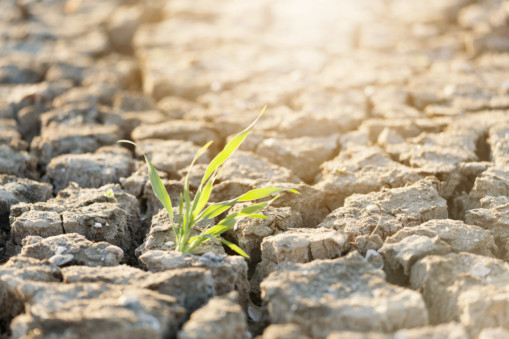
Water puts pressure on people everywhere — whether they are struggling with too much, too little, or too dirty water. In fact, a water crisis is evaluated as one of the highest risks to the world and with the largest impact, according to the World Economic Forum. We outline the causes of this global water crisis — and offer a lifebuoy that can help us overcome it.
It is estimated that close to one-third of the world’s population (approximately 1.8 billion people) will live in water scarce areas by 2025 — this number includes both developing and developed countries. The other two-thirds of the world’s population could very well be under stress conditions. The Mena region, in specific, has been guilty of unsustainable water use, with more than half of current water withdrawals in some countries exceeding the natural water available. This isn’t hard to believe considering more than 60 per cent of the region’s population is concentrated in places affected by high or very high surface water stress, compared to a global average of about 35 per cent, according to a recent report by the World Bank. If the report is anything to go by, water scarcity will also be affected by the changing climate which, by 2050, will cause economic losses estimated at 6-14 per cent of GDP — the highest in the world. At the same time, it is thought-provoking that at any one time over half the world’s hospital beds are filled with people suffering from water-related diseases, according to UNDP. To fight this adverse development, big organisations are raising global awareness towards the fact that water is a limited resource. The World Economic Forum has already raised the alarm, and is supported by multiple NGOs, political agreements, and the United Nations, with the latter having developed 17 Sustainable Goals with the ambition to transform our world — goal number 6 is to ensure access to water and sanitation for all.
The water-food-energy nexus
It is no secret that the global population is rapidly increasing along with urbanisation and a larger middle class. This is, of course, positive and a sign of improved living standards. However, as populations grow, environmental pressures mount. And along with the consumption patterns of an expanding middle class, this will put a critical pressure on food, water, and energy supplies in less than two decades.
The global demand for fresh water will rise by 40 per cent, which in itself will put pressure on water-stressed areas. On top of this, the demand for energy will go up by 50 per cent — further stressing these areas, as 90 per cent of all power generation is water-intense. This means, that power plants will be forced to lower their production of energy due to the lack of water for cooling. Hence, we need to start using water more efficiently to meet the growing demands for water, food, and energy.
There is a strong relationship between everyday consumption of food and the use of water. For instance, it takes 70 litres of water to grow one apple and 40 litres to produce one slice of bread. However, what really puts pressure on the water supply is meat production: One kilo of beef takes 15,500 litres of water to make. As both the population and the middle class increase, in the future demands for everyday goods will increase significantly — putting great pressure on the environment as withdrawal of water for agriculture already accounts for approximately 70 per cent of all water used globally.
It goes without saying that water is a resource that is essential for continued human and economic development, and therefore must be protected. We cannot refill the world’s freshwater reserves. But we can change the way resources are used.
The good news: Technologies to reduce energy consumption and leakage at all stages of the water cycle already exist — from production and distribution to wastewater pumping and treatment. Pressure sensors and variable speed drives play a key role in reducing global water and energy loss — especially when it comes to controlling irrigation systems which will have a major impact. And with intelligent monitoring and adaptive pressure control, water utilities worldwide are able to significantly improve pressure management, leading to a great reduction in leakage and non-revenue water.
John Conboy is drives director at Danfoss.



_resources1_16a45059ca3_small.jpg)




